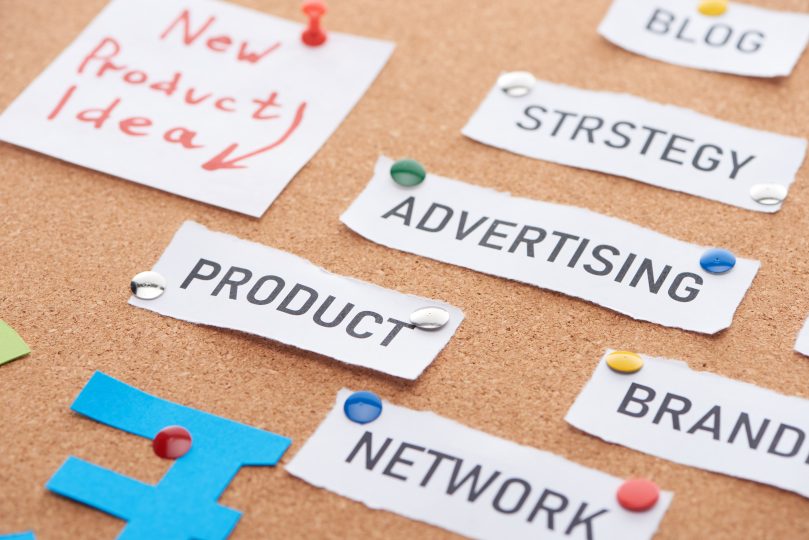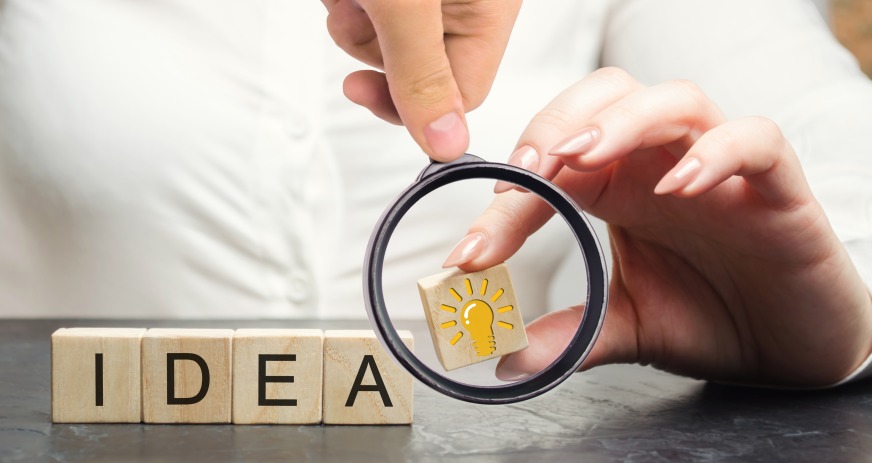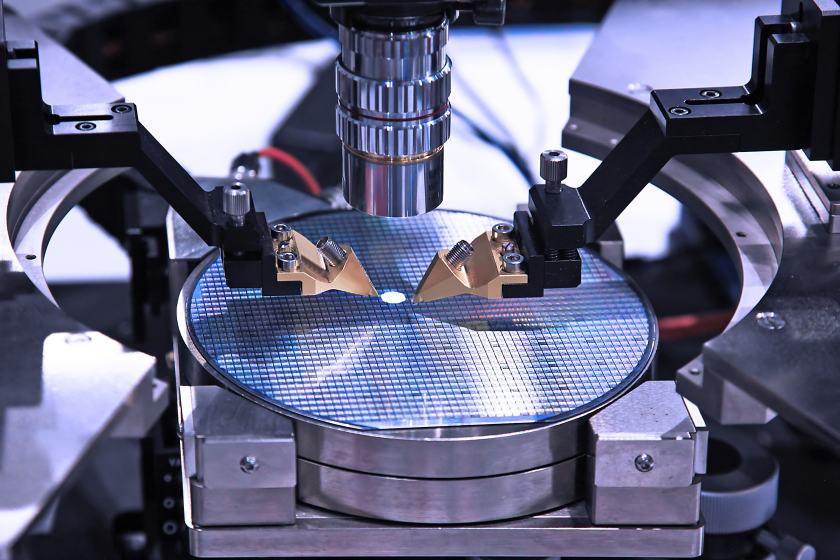The product development lifecycle is a structured process that takes an innovative idea from its conceptual stage and transforms it into a market-ready product. This multifaceted journey encompasses various stages, each with its own set of objectives, challenges, and key activities.
It begins with the conception of an idea or identification of a market need. This idea is then refined through feasibility analysis, market research, and the formulation of a solid product concept. Once the concept is approved, it moves into the development phase, where prototypes are built, and the product design is finalized.
The next stage involves rigorous testing and validation to ensure the product meets quality and performance standards. After successful testing, the product enters the production phase, where it is manufactured at scale. Concurrently, marketing and sales strategies are developed to create demand in the target market.
Upon completion of production, the product is launched into the market, accompanied by a marketing campaign to attract customers. Post-launch, ongoing maintenance, support, and continuous improvement efforts ensure the product remains competitive and aligned with evolving customer needs.
The product development lifecycle is a dynamic and iterative process that requires cross-functional collaboration, innovation, and adaptability. It serves as a roadmap for transforming ideas into tangible solutions that add value to customers and drive success in the marketplace.
Idea Generation
Idea generation is the foundational stage in the product development lifecycle, marking the inception of a new product or innovation. During this phase, the objective is to identify promising concepts or address market needs that could lead to a valuable and marketable product. Here’s a deeper look at the idea generation stage:
Innovation Catalyst: Idea generation is often sparked by various catalysts, such as technological advancements, changes in consumer behavior, emerging market trends, or internal brainstorming sessions.
Market Research: A critical aspect of idea generation is conducting market research to understand customer preferences, pain points, and unmet needs. This research helps identify opportunities for new products.
Cross-Functional Collaboration: Teams from different departments, including marketing, engineering, and product management, often collaborate to brainstorm and generate ideas. Diverse perspectives enhance the quality of generated concepts.
Creative Techniques: Idea generation may involve creative techniques like brainstorming, mind mapping, design thinking workshops, or customer feedback sessions via data capture forms to stimulate innovative thinking.
Prototyping: Sometimes, early-stage prototypes or mock-ups are created to visualize and refine the ideas, making them more tangible for evaluation.
Risk Assessment: Ideas are also subjected to initial risk assessments to identify potential technical, financial, or market-related challenges.
Idea Prioritization: Not all ideas generated during this phase will be pursued. A process for prioritizing and selecting the most promising concepts for further development is essential.
Feasibility Analysis: After idea generation, a feasibility analysis is often conducted to evaluate whether the selected ideas are technically, financially, and market-wise viable.
The idea generation phase is the creative heart of the product development process, where innovation flourishes, and the journey toward bringing a new product to market begins. It sets the stage for subsequent stages in the product development lifecycle, where selected ideas will be refined, developed, and ultimately launched into the market.
Conceptualization
Conceptualization is a crucial phase in the product development lifecycle, following the initial idea generation stage. During this phase, ideas are further refined, detailed, and transformed into a comprehensive product concept. Here’s an in-depth look at the conceptualization stage:
Idea Refinement: Conceptualization involves refining and crystallizing the ideas generated in the previous stage. The goal is to create a clear and comprehensive vision for the product.
Defining Objectives: In this phase, project teams establish specific objectives for the product. They outline what the product aims to achieve, who the target audience is, and what problems or needs it addresses.
Feature Specification: Detailed feature specifications are developed. This includes outlining the functionalities, user interface, and user experience design, providing a blueprint for the product’s development.
Market Fit Assessment: The product concept is assessed for its alignment with market needs and demands. This step ensures that the envisioned product addresses a real problem or opportunity.
Technical Feasibility: An initial assessment of the technical feasibility is conducted. Teams evaluate whether the proposed features and functionalities are achievable with the available technology or resources.
Resource Estimation: Conceptualization also involves estimating the resources required for product development, including human resources, materials, and technology.
Risk Identification: Potential risks and challenges are identified during this phase, allowing project teams to proactively plan for risk mitigation strategies.
Business Case Development: A business case is formulated, outlining the potential return on investment (ROI), cost estimates, revenue projections, and market entry strategies.
Stakeholder Alignment: Stakeholders, including investors, project sponsors, and key team members, are aligned with the product concept and objectives.
Documentation: Comprehensive documentation is prepared, summarizing the product concept, objectives, features, and the rationale behind the project.
Conceptualization sets the stage for subsequent stages in the product development lifecycle. It ensures that the product’s vision is well-defined, aligns with market needs, and has a clear roadmap for execution. The outcome of this phase serves as a guiding document for the development and eventual launch of the product into the market.
Feasibility Analysis
Feasibility analysis is a pivotal phase in the product development lifecycle that follows the conceptualization stage. It involves a comprehensive evaluation of the technical, financial, and market-related aspects of a proposed product to determine its viability and potential success. Here’s a closer look at the feasibility analysis:
Technical Feasibility: This aspect assesses whether the product concept can be technically developed using available resources and technology. It examines the capabilities of the development team, the availability of necessary technology, and the feasibility of implementing the required features and functionalities.
Financial Feasibility: Financial analysis evaluates the cost of developing and launching the product compared to the expected returns. It includes estimating development costs, production costs, marketing expenses, and revenue projections. This analysis helps determine whether the product is financially viable and if the expected ROI meets predefined objectives.
Market Feasibility: Market feasibility assesses whether there is a demand for the product in the target market. It involves market research, competitor analysis, and understanding customer needs. The goal is to ensure that the product has a viable market niche and that it aligns with market trends and preferences.
Risk Assessment: Feasibility analysis identifies potential risks and challenges that could hinder the project’s success. It includes risk identification, analysis, and the development of risk mitigation strategies to address uncertainties.
Resource Availability: Evaluating the availability of resources, including skilled personnel, technology, materials, and funding, is crucial to ensuring that the project can be executed effectively.
Regulatory and Legal Compliance: Feasibility analysis includes an examination of regulatory and legal requirements that may affect the product’s development, manufacturing, and market entry.
Go/No-Go Decision: Based on the findings of the feasibility analysis, a go/no-go decision is made. If the product is deemed feasible, it proceeds to the development phase. If not, the project may be revisited, refined, or cancelled.
Feasibility analysis is a critical gatekeeper in the product development lifecycle, helping organizations make informed decisions about whether to invest further resources in a project or explore other opportunities. It ensures that a proposed product is technically achievable, financially sound, and has a promising market, increasing the likelihood of successful development and market entry.
Ready to elevate your innovation game with the product development lifecycle?
Contact Growth Hackers
Market Research
Market research is a foundational phase in the product development lifecycle, occurring after the idea generation and conceptualization stages. This critical step involves gathering, analyzing, and interpreting data to gain deep insights into the market landscape, customer preferences, and competitive dynamics. Here’s a detailed overview of market research in the product development process:
Understanding Customer Needs: Market research seeks to understand the specific needs and preferences of the target audience. This includes identifying pain points, desires, and unmet needs that the product can address. Take Airbnb as an example: Airbnb management plays a crucial role in translating market research insights into actionable strategies. Once customer needs and preferences are identified through thorough research, effective Airbnb management involves implementing changes and improvements that directly address these findings. Whether it’s enhancing property amenities, optimizing pricing strategies, or tailoring guest communication, Airbnb management teams can leverage market research to fine-tune their operations and provide an experience that aligns with guest expectations.
Competitor Analysis: Analyzing competitors helps in assessing the competitive landscape. It identifies existing products or services in the market, their strengths and weaknesses, and opportunities to differentiate.
Market Size and Growth Potential: Research determines the size of the target market and its growth potential. This data is essential for assessing market viability and estimating market share potential.
Demographic and Psychographic Profiling: Market research segments the target audience based on demographic, psychographic, and behavioral characteristics. This segmentation helps in tailoring marketing strategies and product features.
Trends and Market Dynamics: Research identifies current market trends, emerging technologies, and shifting consumer behaviors that could impact the product’s success.
Regulatory and Compliance Considerations: Market research also explores regulatory requirements and industry standards that the product must adhere to, ensuring legal and ethical compliance.
Pricing Strategy: Insights gained from market research assist in determining an appropriate pricing strategy that aligns with customer expectations and market conditions.
Distribution Channels: Understanding how products reach consumers is vital. Market research identifies the most effective distribution channels for the product.
Market Entry Strategy: Research informs the strategy for entering the market, whether through a soft launch, regional expansion, or other methods.
Risk Mitigation: Identifying potential market risks and challenges enables proactive risk mitigation strategies.
Market research serves as the foundation for informed decision-making throughout the product development lifecycle. It ensures that the product concept aligns with market demand, customer needs, and competitive positioning. The insights gained from market research guide subsequent stages, including product design, development, and marketing, increasing the likelihood of successful product introduction and market acceptance.
Product Design
Product design is a pivotal phase in the product development lifecycle, occurring after idea generation, conceptualization, and market research. During this stage, the product’s concept is transformed into a tangible and functional design, encompassing both its physical appearance and its user experience. Here’s a deeper look at the product design phase:
Concept Integration: The product design phase involves integrating the conceptualized features and functionalities into a cohesive design. This phase bridges the gap between the idea and the tangible product.
Prototyping: Design teams often create prototypes or mock-ups to visualize the product’s form and functionality. Prototyping allows for iterative testing and refinement.
User-Centered Approach: Product design prioritizes user experience. Designers consider user needs, preferences, and usability, ensuring that the product is user-friendly and meets customer expectations.
Aesthetics and Ergonomics: The design phase addresses the product’s aesthetics, ensuring it is visually appealing, as well as its ergonomics, guaranteeing comfortable and efficient usage.
Material Selection: Materials for manufacturing are chosen based on factors like durability, cost-effectiveness, and environmental impact. Material selection is a critical part of the design process.
Technical Specifications: Detailed technical specifications are created, including engineering drawings, dimensions, and tolerances to guide the production process.
Design Validation: The design is validated through testing and simulations to ensure it meets quality and performance standards. Any design flaws or issues are identified and addressed.
Cost Considerations: Design teams must also consider cost implications, optimizing the design to meet budget constraints while maintaining quality.
Sustainability: Modern product design emphasizes sustainability, considering eco-friendly materials and production processes.
Documentation: Comprehensive design documentation is prepared, including design blueprints, CAD models, and specifications, which serve as a reference for manufacturing.
The product design phase is crucial in shaping the product’s physical and functional attributes. It sets the stage for the subsequent development and manufacturing stages, ensuring that the product aligns with the initial concept, user needs, market demands, and quality standards. A well-executed product design phase is instrumental in bringing a successful, market-ready product to fruition.
Testing and Validation
The testing and validation phase in the product development lifecycle is a critical step that follows product design and precedes manufacturing and market launch. During this stage, the product undergoes rigorous testing and assessment to ensure it meets quality and performance standards. Here’s an in-depth look at testing and validation:
Prototype Testing: Prototypes or pilot units are tested to verify that they function as intended and meet design specifications. This step often involves multiple iterations to refine the product.
Quality Assurance: Comprehensive quality assurance procedures are implemented to identify and rectify any defects or deficiencies in the product’s design or functionality.
Performance Testing: Products are subjected to various performance tests, including stress testing, load testing, and durability tests, to ensure they can withstand real-world conditions and usage.
Usability Testing: Usability testing assesses how easily users can interact with the product. It helps identify user experience issues and leads to refinements in design and functionality.
Safety Testing: For products with safety implications, such as medical devices or automotive components, safety testing is essential to ensure compliance with safety standards and regulations.
Regulatory Compliance: Products may need to undergo testing and validation to ensure they meet industry-specific regulatory requirements and standards.
Environmental Impact Assessment: Environmental testing evaluates the product’s impact on the environment, including considerations for recyclability and sustainability.
Compatibility Testing: If applicable, compatibility with other systems, software, or devices is tested to ensure seamless integration.
Validation Protocols: Detailed validation protocols are established, specifying testing methods, acceptance criteria, and documentation procedures.
Documentation and Reporting: Comprehensive documentation of testing results and validation reports is essential for compliance, quality control, and future reference.
The testing and validation phase serves as a critical quality control checkpoint. Successful completion of this phase ensures that the product is safe, functional, and aligned with design specifications and regulatory requirements. Any identified issues can be addressed before production, minimizing the risk of defects reaching the market and ensuring that the final product meets customer expectations.
Development
The development phase in the product development lifecycle is a pivotal stage where the product concept is transformed into a tangible, functional, and manufacturable product. This phase encompasses various key activities:
Detailed Design: Building upon the product design phase, this stage involves creating detailed engineering plans and specifications that guide the manufacturing process.
Prototyping: Prototypes developed during product design are further refined and tested to ensure they meet quality and performance standards.
Manufacturing Planning: Detailed manufacturing plans are established, including processes, materials, and resource allocation to ensure efficient production.
Sourcing and Procurement: Necessary materials, components, and resources are sourced and procured to support production.
Quality Control: Stringent quality control measures are implemented throughout the manufacturing process to identify and address defects or deviations from specifications.
Testing and Validation: Products are subjected to thorough testing and validation to confirm that they meet the established quality and performance criteria.
Iterative Refinement: The development phase often involves iterative refinement to address any issues or improvements identified during testing and validation.
Documentation: Comprehensive documentation is maintained to track the development process, changes made, and compliance with design specifications.
Cost Management: Ongoing cost management ensures that the project stays within budget and that cost-effective manufacturing practices are employed.
Timeline Adherence: Project timelines are closely monitored to ensure that the product development stays on schedule.
The development phase is where the product takes shape, moving from the conceptual and design stages to becoming a tangible reality. Successful execution of this phase is essential for ensuring that the product is not only well-built but also aligned with market needs and ready for subsequent manufacturing and market launch phases.
Innovate with precision – navigate the product development lifecycle seamlessly now!
Production
The production phase in the product development lifecycle is a critical step where the product design and development efforts transition into actual manufacturing and assembly. This phase focuses on scaling up production to meet market demand efficiently and ensuring that the product is built to the highest quality standards. Here’s an overview of the production phase:
Manufacturing Setup: Production facilities and assembly lines are set up, and equipped with the necessary machinery and tools to mass-produce the product.
Quality Control: Stringent quality control processes are implemented at every stage of production to monitor and maintain product quality, adherence to specifications, and defect prevention.
Supplier Management: Effective management of suppliers and vendors is crucial for a smooth production process, ensuring a timely and reliable supply of materials and components.
Cost Optimization: Ongoing cost management practices are employed to control production expenses and maintain profitability while delivering a competitively priced product.
Scaling Up: The production phase involves scaling up production volumes to meet market demand, often requiring adjustments to manufacturing processes and resource allocation.
Inventory Management: Inventory levels are managed to ensure an adequate supply of finished products without excess or shortages.
Workforce Training: Production teams are trained in the specific manufacturing processes and quality control measures required for the product.
Waste Reduction: Efforts are made to minimize waste and optimize resource utilization, aligning with sustainability goals.
Regulatory Compliance: Compliance with industry regulations and quality standards is maintained throughout the production process.
Continuous Improvement: Ongoing process improvement initiatives are implemented to enhance efficiency, reduce costs, and maintain product quality.
The production phase is a crucial bridge between product development and market launch. Successful execution ensures that the product is manufactured efficiently, cost-effectively, and in a way that meets or exceeds quality standards. It sets the stage for the final step in the product development lifecycle, which is the market launch and distribution of the product to customers.
Marketing and Sales Strategy
The marketing and sales strategy phase in the product development lifecycle is where the groundwork is laid for introducing the product to the market successfully. This phase is crucial for generating awareness, creating demand, and ultimately driving sales. Here’s a closer look at this stage:
Market Segmentation: The target market is segmented based on demographics, psychographics, and behavior to tailor marketing efforts effectively.
Value Proposition: The unique value and benefits of the product are defined, highlighting how it addresses customer needs and outperforms competitors.
Pricing Strategy: A pricing strategy is established, taking into account production costs, competitor pricing, and perceived value to customers.
Distribution Channels: Decisions are made regarding the most effective distribution channels, whether through retailers, e-commerce, or direct sales.
Marketing Collateral: Marketing materials, including brochures, websites, social media content, and advertisements, are created to communicate the product’s features and benefits.
Promotional Campaigns: Marketing campaigns are designed to generate buzz and interest in the product. This includes digital marketing, advertising, trade shows, and public relations efforts.
Sales Planning: Sales teams are equipped with the necessary tools, training, and incentives to effectively sell the product.
Launch Strategy: A comprehensive launch plan is developed, outlining the timing and tactics for the product’s introduction to the market.
Customer Support and Service: Plans for customer support, warranty, and ongoing service are established to ensure a positive customer experience.
Metrics and Analytics: Key performance indicators (KPIs) are defined to measure the effectiveness of marketing and sales efforts, allowing for continuous improvement.
The marketing and sales strategy phase is integral to the product’s success in the market. A well-executed lifecycle marketing process maximizes product visibility, attracts potential customers, and drives sales growth, ultimately leading to the successful market entry and adoption of the product.
Launch and Post-Launch Activities
The launch and post-launch activities represent the culmination of the product development lifecycle, transitioning from the development and marketing phases to the product’s introduction into the market and its ongoing management. Here’s an overview of this critical phase:
Product Launch: The product is officially introduced to the market, often accompanied by marketing campaigns, press releases, and promotional events to create buzz and attract customers.
Distribution: Products are made available through chosen distribution channels, whether it’s in physical retail stores, online marketplaces, or other outlets.
Customer Engagement: Post-launch, active engagement with customers begins. This includes addressing inquiries, providing customer support, and gathering feedback.
Monitoring and Evaluation: Key performance indicators (KPIs) are closely monitored to assess the product’s performance in the market. Metrics may include sales figures, customer satisfaction, and market share.
Feedback Integration: Customer feedback is collected and analyzed to identify areas for improvement. This feedback loop informs future product updates or iterations.
Marketing Continuation: Marketing efforts continue to maintain product visibility and attract new customers. These efforts can include advertising, search engine optimization, content marketing, mass email marketing, and social media engagement.
Quality Assurance: Ongoing quality control and assurance processes ensure that the product continues to meet established quality standards.
Maintenance and Updates: If necessary, product updates and maintenance are conducted to address issues, add new features, or stay competitive in the market.
Expansion and Growth: Strategies for product expansion, whether through geographic expansion or entering new market segments, are explored.
Lifecycle Management: Over time, as the product matures, decisions are made regarding its long-term viability, potential discontinuation, or replacement with new offerings.
The launch and post-launch phase is essential for sustaining and growing the product’s presence in the market. It requires a proactive approach to customer engagement, quality assurance, and adaptability to evolving market dynamics, ensuring the product’s continued success and relevance in the marketplace.
Closing Thoughts about the Product Development Lifecycle
The product development lifecycle, from idea to market, is a structured and systematic journey that transforms innovative concepts into tangible products ready for market entry. This multifaceted process involves various stages, each with its unique challenges, objectives, and key activities. It represents a culmination of creativity, innovation, and diligent execution.
Idea Generation initiates the process by identifying opportunities and needs in the market.
Conceptualization refines ideas into a clear product vision, aligning objectives with market demands.
Feasibility Analysis evaluates the viability of the concept from technical, financial, and market perspectives.
Market Research validates market demand, identifies target audiences, and informs strategic decisions.
Product Design shapes the product’s form and functionality, emphasizing user experience and aesthetics.
Testing and Validation ensure that the product meets quality and performance standards.
Development transforms design concepts into functional prototypes and production-ready products.
Production scales up manufacturing, emphasizing quality control and efficient resource utilization.
Marketing and sales strategy positions the product in the market, creating demand and promoting sales.
Launch and Post-Launch Activities oversee the product’s market entry and ongoing management.
Throughout this lifecycle, cross-functional collaboration, adaptability, and customer-centricity are essential. The success of the product development process hinges on the ability to turn innovative ideas into valuable solutions that meet customer needs and expectations, achieve market success, and drive growth for organizations. Continuous improvement, customer feedback, and adaptability ensure that products remain competitive and relevant in an ever-changing market landscape.
Growth Hackers is an award-winning growth hacking company helping businesses from all over the world grow. There is no fluff with Growth Hackers. We help entrepreneurs and business owners elevate their product development journey, increase their productivity, generate qualified leads, optimize their conversion rate, gather and analyze data analytics, acquire and retain users and increase sales. We go further than brand awareness and exposure. We make sure that the strategies we implement move the needle so your business grow, strive and succeed. If you too want your business to reach new heights, contact Growth Hackers today so we can discuss about your brand and create a custom growth plan for you. You’re just one click away to skyrocket your business.









